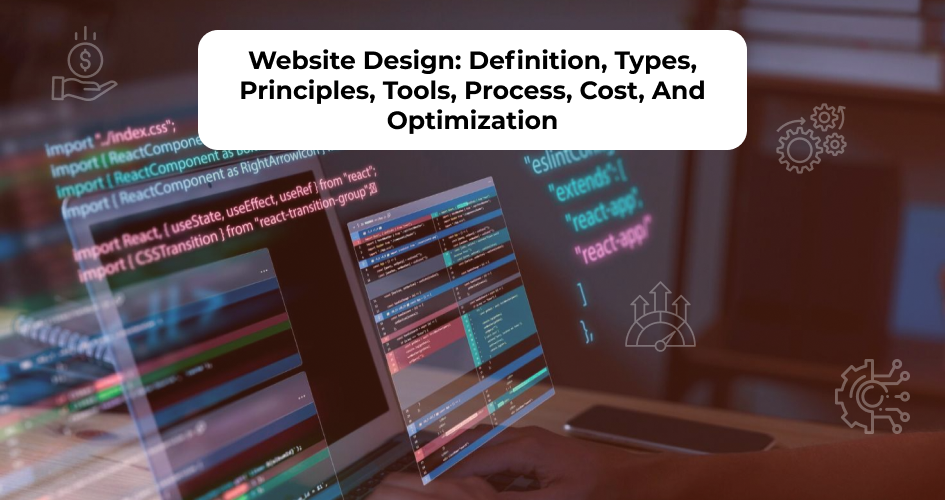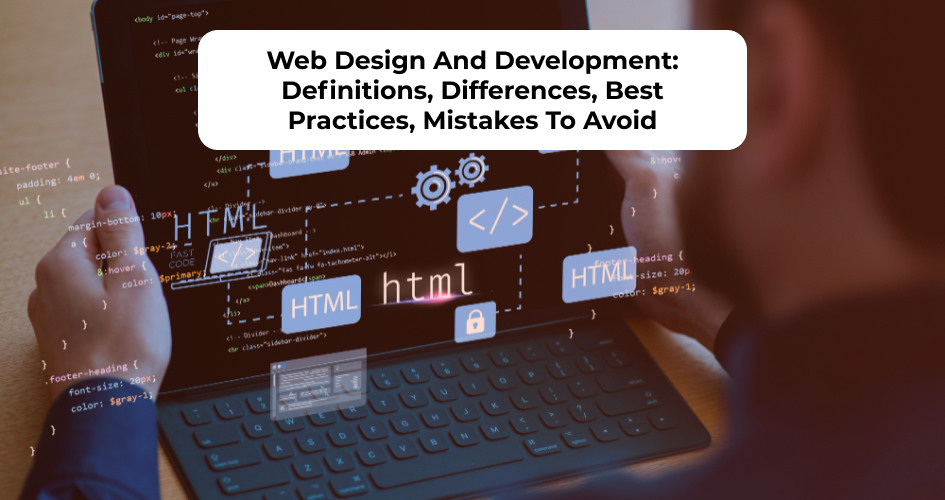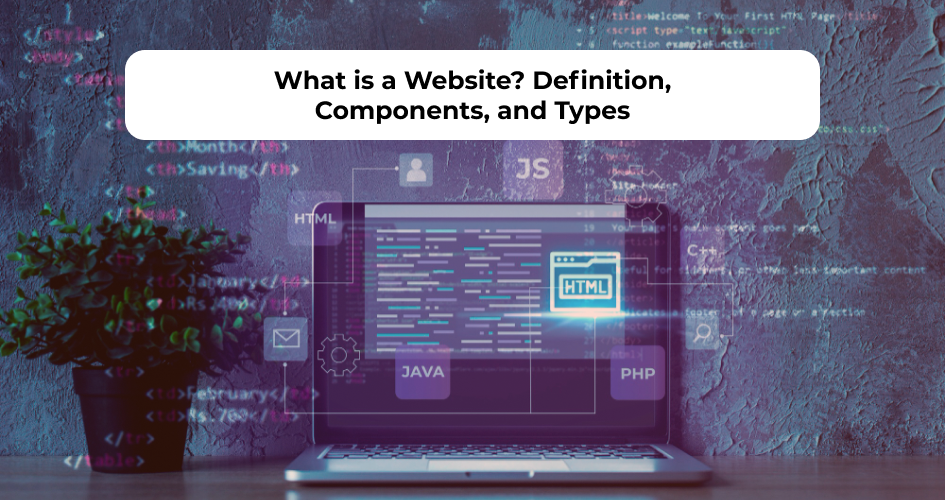Introduction
Web portals have become an integral part of our digital outlook, providing a centralized platform for accessing information and services.
In this article, we will explore the various types of web portals and the benefits they offer.
Whether you are a business owner looking to enhance customer experiences or an organization seeking improved internal communication, understanding web portals can be invaluable.
Let’s get started!
What is a Web Portal?
A web portal is a single-point access platform that delivers private content or services through a login experience.
It acts as a gateway, providing users with personalized information based on their specific needs.
Searching for top-rated custom web portal development company to build your web portal?
Schedule a FREE 30-minute consultation with experts at Intelivita today!
Advantages of Web Portals?
Web portals offer numerous advantages, including:
- Enhanced Communication: Web portals serve as a hub for communication between businesses and their customers or employees. They facilitate seamless interaction, enabling the exchange of information, documents, and feedback.
- Centralized Information: Web portals gather diverse information from various sources into one location. This consolidation simplifies access to essential documentation, reducing the time spent searching for information across multiple platforms.
- Improved User Experience: Delivering personalized content and services based on user preferences, web portals enhance the overall user experience. Users can easily navigate through relevant information tailored to their needs.
Overview of Different Types of Web Portals
Web portals come in different forms, each catering to specific requirements and serving distinct purposes.
Some common types of web portals include:
- Customer Portals: These portals offer personalized access to organizational data for customers. They provide features such as account management, order tracking, support/troubleshooting, and billing/payment access.
- Corporate Portals: Internal information sharing sites for employees, customers, and partners fall under this category. Corporate portals enhance collaboration by facilitating document sharing, project management, and interdepartmental communication.
- Educational Portals: These portals focus on providing educational resources and personalized content to students or learners. They offer features like course materials, assignments, online assessments, and discussion forums.
- Information Portals: Information portals deliver specialized and attractive information to various recipients. They cover topics such as news, entertainment, sports, or any other subject of interest.
- HR Portals: HR portals act as internal access points for HR-related information and interactive web applications. They provide functionalities such as employee self-service capabilities, drag-and-drop functions for form submissions, and benefits management.
- E-commerce Portals: These portals facilitate online sales and transactions. E-commerce portals typically include features like product catalogs, shopping carts, secure payment gateways, and order tracking.
- B2B Portals: Business-to-business portals enable companies to conduct transactions and collaborate with their partners or suppliers. They streamline processes like procurement, inventory management, and order fulfillment.
- Patient Portals: Patient portals offer a secure channel for healthcare providers to interact with their patients. They allow patients to schedule appointments, access medical records, request prescription refills, and communicate with their healthcare providers.
- Employee Portals: Employee portals serve as centralized platforms for accessing company policies, procedures, and internal resources. They provide self-service functionalities like time tracking, leave requests, performance evaluations, and training materials.
- Sales Portals: Sales portals support the sales team by providing access to essential sales tools and resources. These portals may include features like lead management systems, product documentation libraries, and sales training materials.
- eLearning Portals: eLearning portals are dedicated platforms for online learning and training programs. They offer interactive courses, assessments, progress tracking features, and collaboration tools.
In the upcoming sections of this article, we will delve into each type of web portal in more detail to understand their specific purposes and the benefits they bring to users.
Ready to explore? Let’s dive in!
The 11 Different Types of Web Portals
1. Customer Portals
Customer portals are web-based platforms that provide customers with personalized access to private and secure information.
They serve as a gateway for customers to interact with businesses, access account-specific details, and manage their transactions and activities.
These portals offer a self-service model, empowering customers to find answers, place orders, and resolve issues independently.
Benefits of Customer Portals:
Customer portals typically offer a range of features and information, including:
- Account management: allowing customers to update their personal information, view past orders, and track current orders.
- Support and troubleshooting: providing access to FAQs, troubleshooting guides, and customer support contact information.
- Billing and payment access: enabling customers to view invoices, make payments, and set up recurring payments.
- Rewards and loyalty programs: showcasing loyalty points balances and offering exclusive promotions or rewards for repeat customers.
Customer portals play a vital role in enhancing customer satisfaction by offering convenience and autonomy in managing their interactions with businesses.
Providing a central hub for customer activities, these portals contribute to fostering strong customer relationships.
2. Corporate Portals
Corporate portals are web-based platforms that serve as internal information sharing sites for employees, customers, and partners within an organization.
These portals provide a centralized hub for accessing and exchanging important information, documents, and resources.
Key Use Cases of Corporate Portals for Internal Staff
Here are some key use cases of corporate portals that can benefit your internal staff:
- Streamlined Communication: Corporate portals facilitate seamless communication between different departments and teams within the organization. Employees can easily share updates, announcements, and collaborate on projects through discussion boards, chat features, and messaging systems.
- Document Management: Corporate portals offer a secure and organized way to store and manage important documents, such as company policies, procedures, manuals, and training materials. This ensures that employees have access to the most up-to-date information whenever they need it.
- Knowledge Sharing: With a corporate portal, employees can contribute their knowledge and expertise by sharing articles, best practices, and success stories. This encourages a culture of learning and continuous improvement within the organization.
- Employee Self-Service: Corporate portals often include self-service features that allow employees to update their personal information, access HR forms, submit expense reports, request time off, and find answers to frequently asked questions. This reduces administrative workload for HR personnel and empowers employees to take control of their own tasks.
- Collaboration Tools: Many corporate portals offer collaborative tools such as shared calendars, project management boards, and file sharing capabilities. These features enable teams to work together more efficiently on projects and ensure everyone is on the same page.
Examples of Corporate Portal Software
Here are some popular corporate portal software options you can consider:
- Microsoft SharePoint
- Confluence by Atlassian
- Liferay Portal
These platforms offer customizable solutions tailored to meet the specific needs of different organizations.
3. Educational Portals
Educational portals offer personalized user experiences and grant access to a vast array of educational resources.
These portals aim to provide tailored content and learning materials that cater to the specific needs and preferences of individual users.
Key Features of Educational Portals
- Personalized learning paths based on individual goals and progress
- Access to a wide range of educational resources, including articles, videos, and interactive tutorials
- Collaboration tools for students and educators to interact and engage with each other
- Integration with learning management systems for seamless access to courses and grades
Leveraging educational portals, learners can benefit from a more customized and engaging learning experience, while educators can effectively deliver targeted content that meets the diverse needs of their students.
These portals play a crucial role in modernizing the education sector by offering dynamic and interactive online learning environments.
4. Information Portals
Information portals are a specific type of web portal that focuses on providing specialized and attractive information to various recipients.
These portals serve as centralized platforms for delivering valuable content to users, making it easier for them to access the information they need.
Key Features of Information Portals
Here are some key features that define information portals:
1. Wide Range of Content
Information portals offer a wide range of content, including news articles, blogs, research papers, whitepapers, case studies, and more.
They are designed to cater to the specific interests and needs of different target audiences.
2. Attractive Presentation
These portals prioritize visually appealing designs and layouts to make the information more engaging and accessible.
They often include multimedia elements such as images, videos, infographics, and interactive features to enhance the user experience.
3. Targeted Delivery
Information portals deliver content that is tailored to the specific interests and preferences of users.
They use personalization techniques such as user profiles, browsing history, and behavior analysis to recommend relevant content and ensure a customized experience.
4. Multiple Recipients
Information portals serve various recipients, including customers, employees, partners, or the general public.
For example, a company may have an information portal for customers to access product information and updates, while also maintaining an internal portal for employees to access company resources.
5. Enhanced Communication
These portals often include communication features such as commenting systems, forums, or chatbots that allow users to interact with the content and engage in discussions with other users.
This fosters collaboration and knowledge sharing among the community.
6. Authority Building
Consistently providing high-quality and relevant information, information portals can establish themselves as authoritative sources in their respective industries.
This helps build trust with users and strengthens the brand’s reputation.
Examples of Information Portals
Some examples of information portals include:
- Online news websites like CNN or BBC News
- Research databases like JSTOR or PubMed
- Industry-specific knowledge platforms like TechCrunch or Harvard Business Review
5. Human Resources (HR) Portals
HR portals are web portals that provide employees with access to HR-related information and services.
These portals serve as centralized platforms for managing and accessing various HR functions within an organization.
Key Benefits of HR Portals
Here are some key benefits of using HR portals in an organization:
Access to HR-related information
HR portals allow employees to easily access important HR-related information such as company policies, employee benefits, payroll details, and tax forms.
This eliminates the need for manual paperwork and provides employees with a convenient self-service option.
Employee self-service
HR portals often include self-service capabilities that empower employees to manage their own HR tasks.
For example, employees can update their personal information, request time off, view their attendance records, and participate in performance evaluations through the portal.
Interactive web applications
Many HR portals feature interactive web applications with drag-and-drop functions.
This allows employees to easily perform tasks such as submitting expense reports, requesting training or development opportunities, and accessing company-wide communication channels.
Increased efficiency
Providing employees with easy access to HR-related information and self-service capabilities, HR portals help streamline HR processes and increase overall efficiency within the organization.
This reduces the administrative burden on HR staff and allows them to focus on more strategic initiatives.
Improved communication
HR portals facilitate effective communication between employees and the HR department.
Employees can use the portal to submit inquiries or requests, receive updates on company policies or procedures, and stay informed about important HR announcements.
6. eCommerce Portals
E-commerce portals are specifically designed platforms for product sales.
They provide businesses with a digital space to showcase their products, interact with customers, and facilitate online transactions.
These portals offer a seamless shopping experience, allowing customers to browse through product catalogs, add items to their carts, and securely complete their purchases.
Key Features of eCommerce Portals
1. Product Display and Catalog Management
E-commerce portals enable businesses to showcase their products in an organized and visually appealing manner.
They offer features like product categorization, filtering options, and search functionality to help customers easily find what they’re looking for.
2. Shopping Cart and Checkout Process
E-commerce portals provide a user-friendly shopping cart system that allows customers to review their selected items, modify quantities, and proceed to the checkout page.
The checkout process is designed to be secure and efficient, ensuring a smooth transaction for both the customer and the business.
3. Payment Gateways
E-commerce portals integrate with various payment gateways to enable secure online transactions.
Customers can choose from multiple payment options such as credit/debit cards, digital wallets, or bank transfers.
4. Order Management
These portals offer robust order management capabilities for businesses.
From order tracking and fulfillment to generating invoices and managing returns/exchanges, e-commerce portals streamline the entire order process.
5. Inventory Management
E-commerce portals often include inventory management features that allow businesses to track stock levels, manage product variations (such as size or color), and receive notifications when items need restocking.
6. Customer Engagement
E-commerce portals provide tools for businesses to engage with their customers effectively.
Features like customer reviews/ratings, personalized recommendations based on purchase history, and live chat support enhance the overall shopping experience and build customer loyalty.
7. Analytics and Reporting
E-commerce portals offer insights into customer behavior, sales performance, popular products, and other valuable metrics.
This data helps businesses make informed decisions to optimize their online store and marketing strategies.
E-commerce portals are essential for businesses looking to establish a strong online presence and expand their reach.
They provide a convenient platform for customers to discover, evaluate, and purchase products, while offering businesses the tools they need to manage their online sales effectively.
7. B2B Portals
B2B portals are platforms that businesses use to connect and conduct transactions with each other.
These portals make it easy for businesses, suppliers, distributors, and partners to communicate, collaborate, and exchange products, services, and information securely.
Key features of B2B portals include:
- Integration with enterprise resource planning (ERP) systems
- Secure access to pricing and product information
- Streamlined order management processes
- Customized catalog and inventory management
- Efficient supply chain management tools
Benefits of B2B portals
- Enhanced communication and collaboration between business entities
- Streamlined procurement processes and order fulfillment
- Improved visibility into inventory levels and product availability
- Increased operational efficiency and cost savings for businesses involved
Examples of B2B portals:
- Alibaba.com
- Thomasnet.com
- Global Sources
8. Patient Portals
Among the different types of web portals, patient portals are crucial in improving the healthcare experience for people.
These portals are secure online websites that allow patients to access their personal health information anytime and anywhere with an internet connection.
They offer various features to enhance patient engagement, self-care, and satisfaction with healthcare services.
Key Features of Patient Portals:
- Access to Personal Health Records: Patients can view and manage their medical records, including test results, diagnoses, medications, and immunizations.
- Communication with Healthcare Providers: Secure messaging systems enable patients to ask questions, discuss concerns, and receive advice from their doctors without the need for an appointment.
- Appointment Scheduling and Prescription Refills: Patients can request appointments based on their preferred date and time, as well as renew prescriptions online for added convenience.
- Educational Resources for Managing Health Conditions: Patient portals provide educational materials such as articles, videos, and interactive tools to help individuals understand and manage their health conditions effectively.
- Billing and Payment Processing: Users can view their medical bills, insurance claims, and make payments securely through the portal.
Patient portals empower individuals to actively participate in their healthcare journey by promoting better communication with healthcare providers and enabling easy access to essential health-related information and services.
As healthcare becomes more patient-centered, these portals have become essential tools in promoting patient empowerment and improving overall health outcomes in the digital era.
9. Employee Portals
Employee portals are web portals specifically designed to cater to the needs of employees within an organization.
These portals serve as a centralized hub where employees can access important information, resources, and tools that are relevant to their roles and responsibilities.
Features of Employee Portals
Examples of features commonly found in employee portals include:
- Access to company policies and procedures
- Time tracking and attendance management
- Performance evaluation tools
- Training materials and course registration
- Employee directories
- Benefits enrollment
- Internal job postings
10. Sales Portals
Sales portals are web-based platforms designed to streamline the sales process and optimize customer interactions.
These portals serve as a centralized hub for sales teams to access essential resources, collaborate with colleagues, and manage customer relationships.
Key features of sales portals include:
- Lead Management: Efficient tracking and management of leads throughout the sales cycle.
- Content Repository: Centralized storage for marketing collateral, product information, and sales resources.
- Collaboration Tools: Facilitate communication and collaboration among sales team members.
- Customer Data Access: Quick access to customer profiles, purchase history, and account details.
11. eLearning Portals
eLearning portals are a specific type of web portal that focuses on delivering online educational content and resources.
These portals have gained significant popularity in recent years, especially with the increasing demand for flexible and accessible learning options.
Key Features and Benefits of eLearning Portals
Here are some key features and benefits of eLearning portals:
1. Wide Range of Courses
eLearning portals offer a diverse range of courses on various subjects, allowing learners to choose topics that align with their interests or professional goals.
2. Flexible Learning
Unlike traditional classroom settings, eLearning portals provide flexibility in terms of time and location.
Learners can access course materials and complete assignments at their own pace from anywhere with an internet connection.
3. Interactive Learning Experience
eLearning portals often incorporate interactive elements such as videos, quizzes, discussion forums, and virtual simulations to enhance the learning experience and promote engagement.
4. Personalized Content
Many eLearning portals utilize algorithms to personalize the learning journey for each student.
They analyze individual preferences and performance to recommend relevant courses or modules.
5. Cost-Effective
eLearning portals can be more cost-effective than traditional education methods as they eliminate the need for physical infrastructure and reduce travel expenses.
6. Access to Expertise
Through eLearning portals, learners can access courses taught by industry experts or renowned professors from around the world, providing valuable insights and up-to-date knowledge.
7. Progress Tracking
eLearning portals often include progress tracking features that allow learners to monitor their performance, track completion rates, and identify areas where additional study may be needed.
Ready to Build Your Web Portal With Intelivita?
Web portals offer a wide range of benefits that can transform the way organizations interact with their users and stakeholders.
Providing centralized access to information, personalizing experiences, improving communication, and increasing productivity, web portals contribute to enhanced user satisfaction, streamlined processes, and business growth.
If you’re ready to build your web portal, you can connect with our team of experienced web portal developers.





